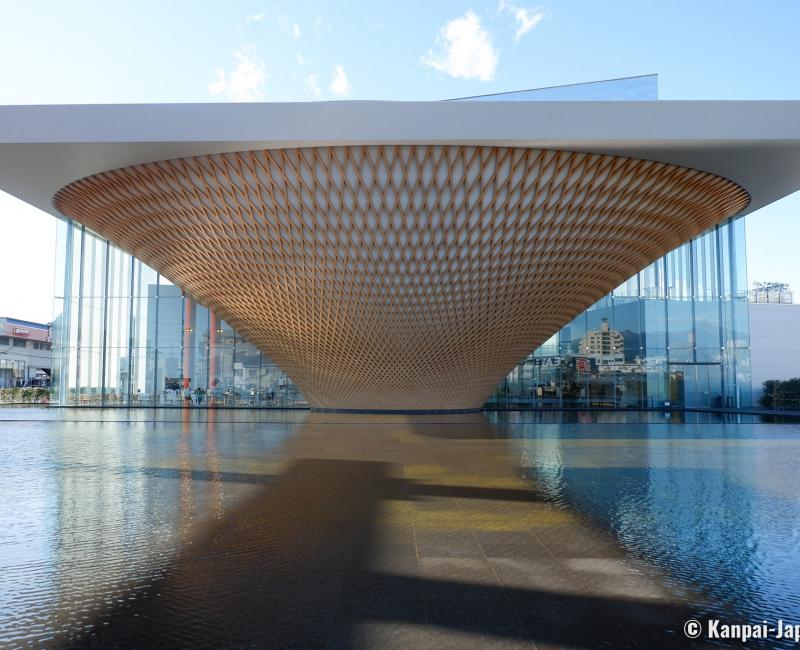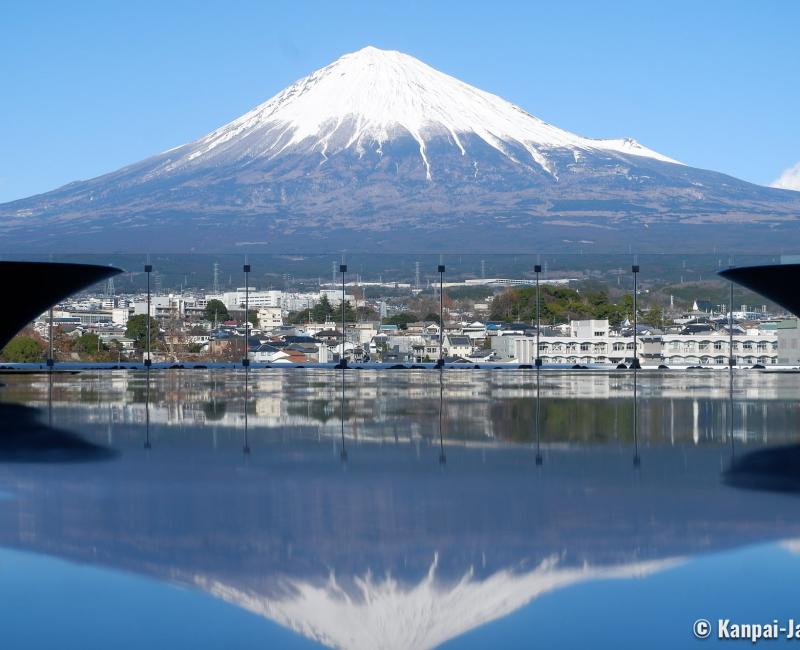Mt. Fuji World Heritage Centre (Shizuoka)
Fuji-san’s Museum
Mt. Fuji World Heritage Centre is an exhibition gallery dedicated to Fuji-san and located in Fujinomiya in Shizuoka prefecture in Japan. Inaugurated in 2017, it displays an elegant contemporary building where the various geological, environmental, artistic, and religious aspects of Mount Fuji are introduced.
The Mount Fuji 🗻 museum, of its full official name "Mt. Fuji World Heritage Centre (Shizuoka)" is aiming at the promotion of the Japanese holy mountain toward the future generations and ensure its protection and its preservation. The center was inaugurated in 2017 after Mount Fuji and twenty-five of its neighboring sites were inscribed in the UNESCO World Heritage List in 2013. The exposition tells the story of the mountain throughout the ages as well as its divine character for the Japanese people.

An elegant building shaped as an inverted cone
Designed by Japanese architect Shigeru Ban, who also imagined the Centre Pompidou-Metz (France) among other impactful constructions, the site is worth the detour for its architecture in the first place. It suggests the shape Mount Fuji in an impressive cypress wood lattice inverted cone. The structure is reflected in the pond at its foot, replicating the same perfect conic shape as the volcano 🌋’s, especially on windless days. Just next to it, a large bright red torii ⛩️ gate reminds of the sacred significance of the mountain and provides a Shinto shrine atmosphere.
The air at the entrance is filled with the pleasant fragrance of the cypress wood exuding from the construction. The wood was quite naturally harvested in Mount Fuji’s neighboring forests.
Virtual climb to the observatory on Mount Fuji
The permanent exhibition is featured inside the large cylindrical under-structure: visitors walk a spiraling slope imitating the real climbing to the top of Mount Fuji.
All along the way, time-lapses movies of the mountains are shown on screens, from the valley and up to the top of the volcano’s sleeping crater. Images also feature virtual hikers climbing the mountain with rucksacks and sticks. Silhouettes are staged taking breaks to eat, putting on an anorak to protect from cold and it really feels like walking with them.
In the upper exhibition room, screens are replaced by the sound of the wind recorded directly at the top of Mount Fuji, to emphasize the impression of immersion.
This last floor is the highlight of the museum with large windows providing an unobstructed view on the Fuji-san on clear weather days. The mountain is reflected on the room’s floor in a stunning mirroring effect. The windows are sometimes wide opened to better enjoy the totally unobstructed panorama. On bad weather days, when clouds hide the volcano, a picture of it is graciously placed on a chair for visitors to imagine what it looks like.
On a side of the room, a map of Japan shows the farthest places from which Mount Fuji can be viewed. For example, it is possible to see it from the Tateyama Mountain Range in Toyama prefecture, more than 165 kilometers away.

Thematic exhibitions on Fuji-san
In addition to the virtual climbing, various thematic spaces offer to learn more about the volcanic origins and the sacred aspects of the mountain:
- The birth of the volcano is explained in a short and well-made educational movie. Spectators will be surprised to learn that the cone did not always have its perfect cylindrical shape.
- The sacred aspect of the site is an important part of the exhibition and very interesting for amateurs of this topic. Many legends and myths related to the volcano are presented on easy-to-use touchscreen panels. An English version is available to learn more about Japan’s main religious movements: Shinto, Buddhism and Shugendo (a syncretistic current of the formers).
- Another space highlights arts and artworks in relation to the famous volcano, with the same touchscreen panels system. Are also exhibited etchings, various artworks, and poems. The latter were also translated into English, which is quite enjoyable.
- A small movie theater also features three different 15 minutes films. In one of them, the spectators adopt a bird’s view and can watch beautiful images of the volcano from the sky.
- The last room is dedicated to the future of this site listed in the World Heritage. Visitors are invited to write a message to Mount Fuji, on a small piece of paper to pin to a metallic structure, in the same idea as the ema, the votive plates that are found in temples and shrines.
Mt. Fuji World Heritage Centre is a very good place for anyone who would like to further their knowledge of Fuji-san. The beauty of its architecture and its inside layout create a very pleasant visit, whether one has already climbed Mount Fuji or not.


